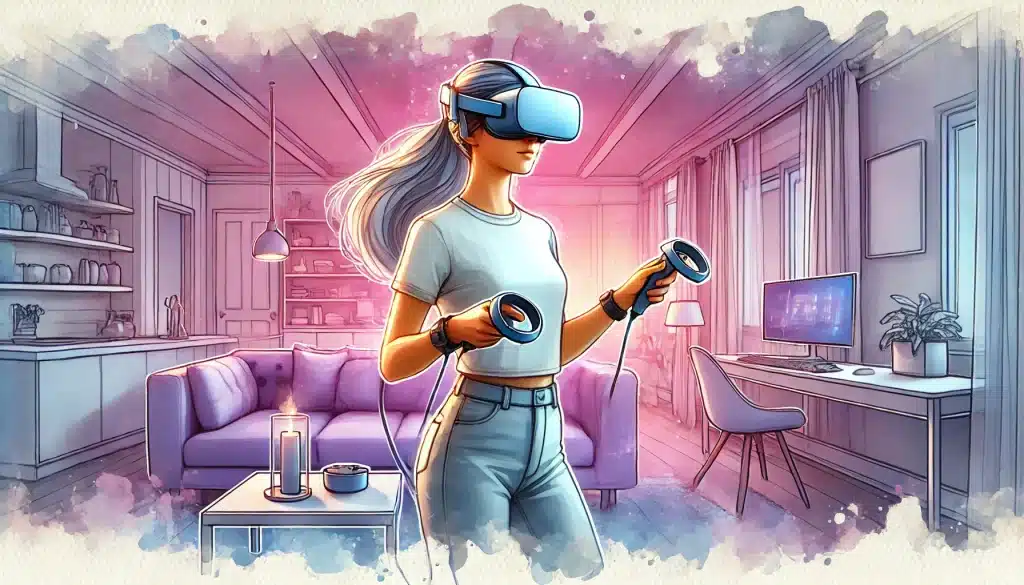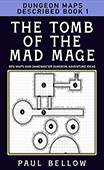
As we step further into 2025, virtual reality (VR) gaming has evolved from a niche interest to a mainstream form of entertainment. The technology has made significant strides, offering more immersive experiences, improved comfort, and a growing library of captivating games and applications. Whether you’re a seasoned VR enthusiast or considering your first foray into virtual worlds, the landscape of VR gaming gear in 2025 offers exciting possibilities for every type of user. This guide will explore the key components of a VR gaming setup, from cutting-edge headsets to intuitive controllers and innovative accessories. We’ll delve into the features that define great VR experiences in 2024, helping you navigate the options available and make informed decisions based on your gaming preferences, space constraints, and budget.
Top 10 VR Headsets for 2025
Virtual reality continues to advance, offering more immersive and accessible experiences for gamers and tech enthusiasts alike. Here are the top 10 VR headsets to consider in 2025:
- Meta Quest 3 – The best overall VR headset of 2024, the Meta Quest 3 offers a standalone experience with improved resolution and performance over its predecessor. It’s user-friendly and versatile, making it a great choice for both beginners and seasoned VR users.
- Valve Index – Known for its high-end performance, the Valve Index offers a 130-degree field of view and a 144Hz refresh rate, making it one of the most immersive VR experiences available. It’s ideal for those who want the best PC VR setup, though it requires a more complex setup.
- PlayStation VR2 – Designed for PlayStation 5 users, the PS VR2 features dual 2K OLED screens, providing 4K quality visuals. It’s one of the most comfortable and immersive headsets for console gaming, though its game library is still growing.
- HP Reverb G2 – This is the best budget-friendly VR headset for PC users. It boasts a 4K resolution per eye and an easy setup process, though it requires a decent gaming PC to perform well. It’s a great choice for those looking for high resolution at a lower price.
- Meta Quest 2 – The best budget VR headset, the Meta Quest 2 remains a popular choice due to its affordability and standalone capabilities. It provides a solid VR experience with a good balance of price and performance, making it ideal for newcomers to VR.
- HTC Vive XR Elite – A top choice for PC VR, the HTC Vive XR Elite offers excellent tracking and a high-resolution display. It’s perfect for those who want a premium VR experience with extensive SteamVR compatibility.
- Pimax Vision 8K X – Known for its ultra-wide field of view and 8K resolution, the Pimax Vision 8K X is one of the most advanced headsets available. It’s designed for enthusiasts who want the absolute best in visual clarity, though it comes with a hefty price tag.
- Apple Vision Pro – Apple’s entry into the VR space is marked by the Vision Pro, a premium headset that offers an unmatched visual experience with intuitive controls and spatial audio. It’s ideal for those who want to integrate VR into their work and entertainment seamlessly.
- Oculus Rift S – Although a bit older, the Oculus Rift S remains a reliable and affordable option for PC VR. It’s easy to set up and provides a good balance of performance and comfort for gamers.
- Pico 4 – A newer player in the market, the Pico 4 offers a competitive alternative to the Meta Quest series with a solid standalone experience and an attractive price point, making it worth considering for those exploring VR options outside of the Meta ecosystem.
These VR headsets offer a range of features to suit different needs, whether you’re looking for high-end performance, budget-friendly options, or the best console experience. Each one brings something unique to the table in 2025.
About VR Headsets
At the heart of any VR setup is the headset, and 2025’s models offer unprecedented levels of immersion and comfort.
Resolution has seen significant improvements, with many headsets now offering 4K or higher resolution per eye. This increased pixel density results in sharper images and reduced “screen door effect,” allowing for more detailed and realistic virtual environments.
Field of view (FOV) has expanded, with some high-end headsets approaching or exceeding 120 degrees. This wider FOV creates a more natural and immersive visual experience, reducing the feeling of looking through a window into the virtual world.
Refresh rates have increased across the board, with 90Hz now being the minimum for a comfortable experience, and many headsets offering 120Hz or higher. These higher refresh rates contribute to smoother motion and reduced potential for motion sickness.
Optics have improved, with advanced lens designs reducing distortion and providing clearer images across the entire field of view. Some headsets now offer variable focus capabilities, allowing users to adjust the focal point for improved clarity and reduced eye strain.
Tracking technology has become more sophisticated, with many headsets now offering inside-out tracking that doesn’t require external sensors. This makes setup easier and allows for more freedom of movement. Some high-end models incorporate eye-tracking technology, enabling foveated rendering for improved performance and more natural interaction within virtual environments.
Comfort has been a major focus of headset design, with manufacturers developing lighter materials, better weight distribution, and improved ventilation to allow for longer, more comfortable play sessions. Adjustable interpupillary distance (IPD) has become standard, ensuring a clear image for users with varying eye spacing.
When choosing a VR headset, consider factors such as resolution, field of view, refresh rate, tracking capabilities, comfort for extended wear, and compatibility with your gaming PC or console. Also, think about whether you prefer a tethered headset for maximum performance or a standalone device for greater convenience and portability.
Controllers and Input Devices
VR controllers have evolved significantly, offering more intuitive and immersive ways to interact with virtual environments.
Hand tracking has become more prevalent, allowing users to interact with virtual objects using natural hand movements without the need for physical controllers. This technology has improved in accuracy and responsiveness, enabling more precise interactions.
For controller-based input, haptic feedback has seen major advancements. Controllers now offer more nuanced and realistic tactile sensations, enhancing the feeling of presence in virtual worlds. Some high-end controllers feature variable resistance in triggers and buttons, providing a more realistic sense of interaction with virtual objects.
Button layouts have been refined to be more intuitive and ergonomic, with many controllers designed to feel natural in the hand for extended periods. Some models offer customizable button mappings and attachments to suit different hand sizes and preferences.
Battery life has improved across the board, with many controllers now offering 10+ hours of active use. Quick charging capabilities ensure minimal downtime between gaming sessions.
Alternative input methods have also emerged, such as treadmill-like devices for more natural movement in VR, and specialized controllers for specific types of games (e.g., flight sticks for VR flight simulators).
When selecting controllers, consider factors such as tracking accuracy, haptic feedback quality, button layout, battery life, and compatibility with your chosen headset and preferred games. Think about the types of VR experiences you enjoy most and choose controllers that will enhance those experiences.
Audio Solutions
Immersive audio is crucial for a truly engaging VR experience, and 2024 offers a range of solutions to deliver high-quality sound in virtual environments.
Integrated audio solutions have improved, with many headsets now featuring high-quality built-in headphones or speakers. These integrated solutions offer convenience and are often designed to provide good spatial audio without interfering with the headset’s fit.
For those seeking premium audio quality, specially designed VR headphones are available. These often feature open-back designs for better awareness of your physical surroundings, and advanced spatial audio capabilities for pinpoint sound localization in virtual spaces.
Spatial audio processing has become more sophisticated, with many headsets and audio solutions now offering highly accurate 3D sound positioning. This enhanced audio spatialization contributes significantly to the sense of presence in VR, allowing users to accurately perceive the direction and distance of sounds within the virtual environment.
Some innovative audio solutions use bone conduction technology, leaving the ears open while still providing immersive sound. This can be particularly useful for users who need to maintain awareness of their physical surroundings.
Microphone technology has also advanced, with many headsets now featuring noise-cancelling microphones for clear communication in multiplayer VR experiences.
When considering audio solutions for VR, think about factors such as sound quality, comfort for extended wear, spatial audio capabilities, and whether you prefer an integrated solution or separate headphones. Also consider whether you need a microphone for social VR experiences or multiplayer gaming.
Accessories and Peripherals
A wide range of accessories has emerged to enhance and expand VR gaming experiences in 2025.
Facial interface replacements offer improved comfort and hygiene, with materials designed to wick away moisture during active VR sessions. Some include scented options or cooling features for added comfort.
Prescription lens adapters have become more common, allowing users who wear glasses to have a comfortable, clear VR experience without their regular eyewear.
External batteries and power banks designed specifically for VR headsets offer extended play sessions for wireless devices.
Protective equipment such as lens covers, silicon skins for controllers, and cable management solutions help preserve the longevity of VR gear.
Full-body tracking solutions have advanced, with more accurate and affordable options available for users who want to bring their entire body into the virtual world.
Haptic vests and gloves provide additional tactile feedback, enhancing immersion in supported games and applications.
VR treadmills and motion platforms have become more compact and accessible, offering natural movement in VR for those with the space and budget for such setups.
When considering accessories, think about your specific needs and the types of VR experiences you enjoy most. While some accessories can significantly enhance immersion, it’s important to prioritize those that will add the most value to your particular VR setup and usage.
Space and Setup Considerations
Creating an optimal environment for VR gaming is crucial for both enjoyment and safety.
Play area requirements vary depending on the VR system and the types of games you plan to play. Some experiences can be enjoyed seated or standing in a small space, while others require room-scale setups for full immersion.
Cable management solutions have improved for tethered headsets, with retractable systems and ceiling-mounted options that minimize trip hazards and reduce cable drag.
Lighting considerations are important, as some VR tracking systems can be affected by very bright or changing light conditions. Consistent, moderate lighting often works best.
Physical safety features like padded mats or tactile markers can help users maintain awareness of their physical space boundaries while immersed in VR.
For wireless headsets, consideration should be given to Wi-Fi setup and potential interference sources to ensure a smooth, low-latency experience.
When planning your VR space, consider the types of experiences you want to enjoy, the tracking requirements of your chosen headset, and how to create a safe, comfortable environment for extended VR sessions.
Performance and Compatibility
For PC-based VR gaming, ensuring your system meets the performance requirements is crucial for a smooth, enjoyable experience.
Graphics cards (GPUs) remain a key factor in VR performance. The demands of rendering high-resolution, high-refresh-rate VR content require powerful, VR-ready GPUs.
Processors (CPUs) also play an important role, particularly in games with complex physics or large numbers of objects to track.
High-speed RAM and fast storage (preferably SSD) contribute to smooth performance and quick load times in VR applications.
Connectivity is crucial, with high-bandwidth, low-latency connections required for the best experience with both tethered and wireless VR setups.
Compatibility between VR hardware and software platforms has improved, but it’s still important to ensure your chosen headset is compatible with the games and applications you want to use.
When considering the performance aspects of your VR setup, think about the types of experiences you want to enjoy and ensure your PC meets or exceeds the recommended specifications for your chosen VR system.
Software and Content Ecosystem
The availability of compelling content is crucial to the VR experience, and 2025 offers a rich ecosystem of games and applications.
Gaming libraries for VR have expanded significantly, with a wide range of genres represented. From action-packed shooters to contemplative puzzle games, there’s VR content to suit almost every taste.
Social VR platforms have evolved, offering increasingly realistic avatars and environments for virtual meetups, concerts, and shared experiences.
Productivity applications have gained traction, with VR being used for everything from 3D modeling to virtual office environments.
Fitness and wellness applications have become a significant category, with VR offering engaging ways to stay active and mindful.
Content creation tools for VR have become more accessible, allowing more developers and artists to create VR experiences.
When considering the software ecosystem, think about the types of experiences you’re most interested in and ensure they’re available on your chosen VR platform.
Health and Safety Considerations
As VR technology has advanced, so too has our understanding of how to use it safely and comfortably.
Motion sickness mitigation techniques have improved, with many games offering comfort options to reduce the potential for VR-induced nausea.
Eye strain considerations have led to improvements in lens technology and recommendations for healthy usage patterns.
Physical safety features in both hardware and software help prevent collisions with real-world objects during VR use.
Hygiene practices have become standardized, with recommendations for cleaning and maintaining VR equipment, especially for shared devices.
When using VR, it’s important to follow recommended usage guidelines, take regular breaks, and be aware of your physical surroundings to ensure a safe and comfortable experience.
Top VR Gifts for Gamers 2025
The world of VR gaming gear in 2025 offers an exciting array of options, from high-end PC-tethered systems to standalone devices that offer convenience and portability. The key to a great VR experience lies in understanding your preferences, space constraints, and the types of virtual experiences you want to enjoy.
When building your VR setup, consider the balance between different components. A well-rounded system will provide the best overall experience, rather than focusing solely on one aspect like resolution or refresh rate. Remember that while cutting-edge hardware offers impressive capabilities, mid-range options often provide excellent experiences at more accessible price points.
Ultimately, the best VR gaming gear is that which allows you to comfortably and enjoyably immerse yourself in virtual worlds. Whether you’re looking for intense gaming experiences, social interactions, fitness applications, or creative tools, the diverse ecosystem of VR technology in 2024 ensures that there’s a perfect setup out there for every user.










